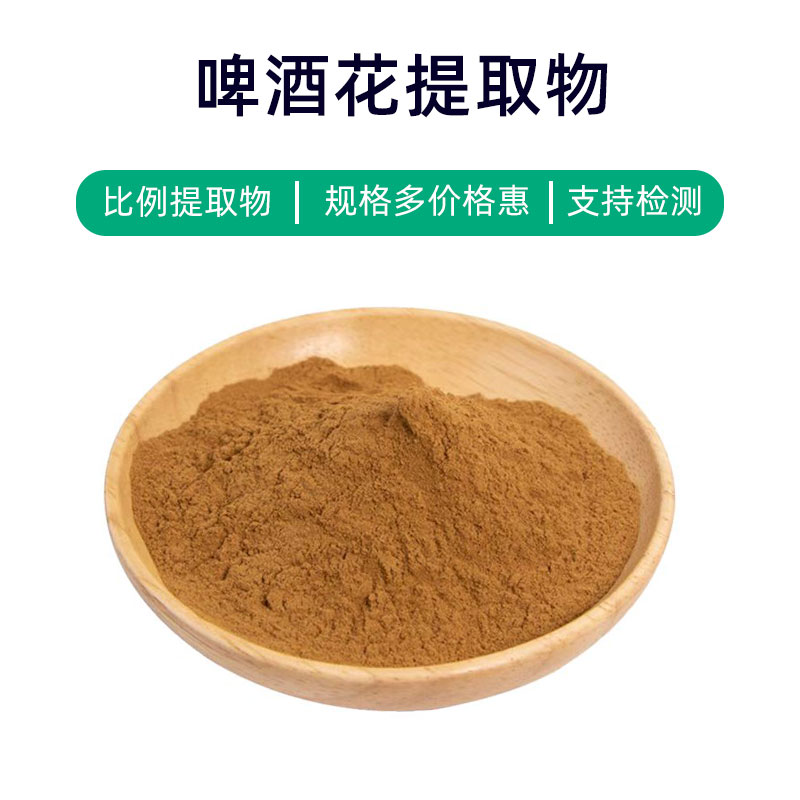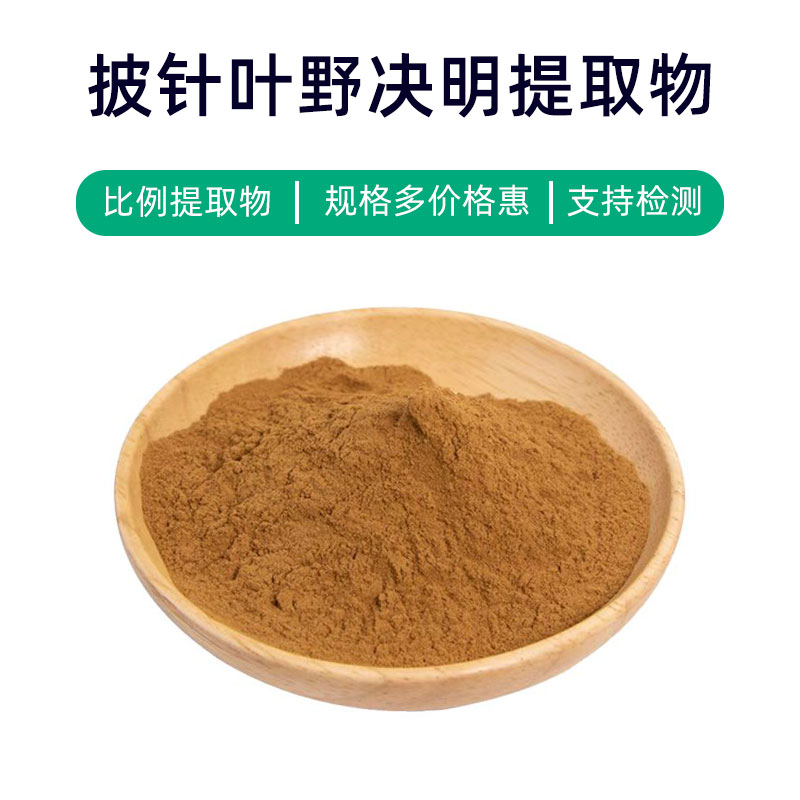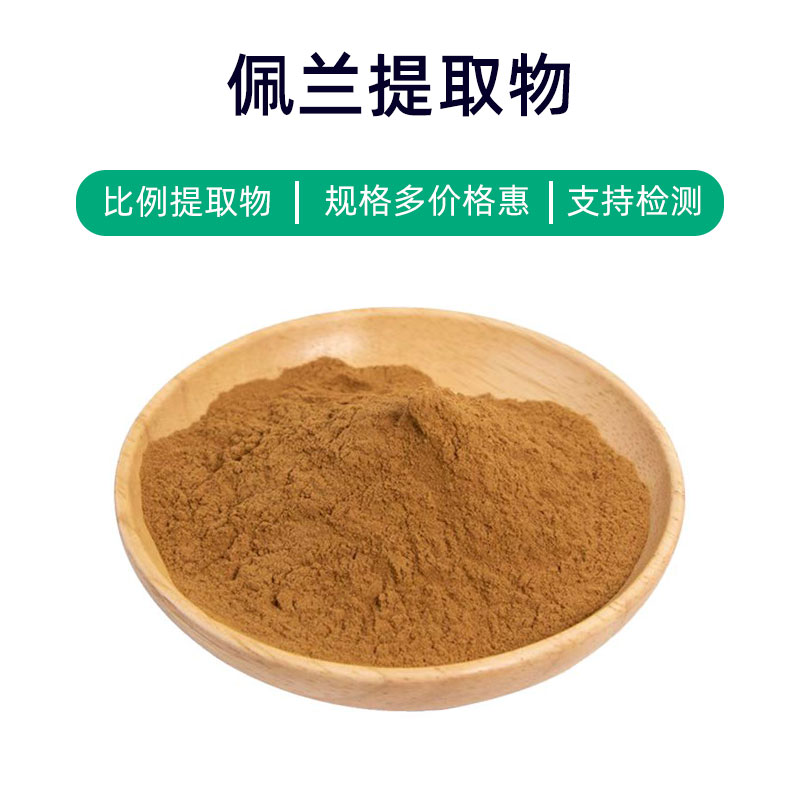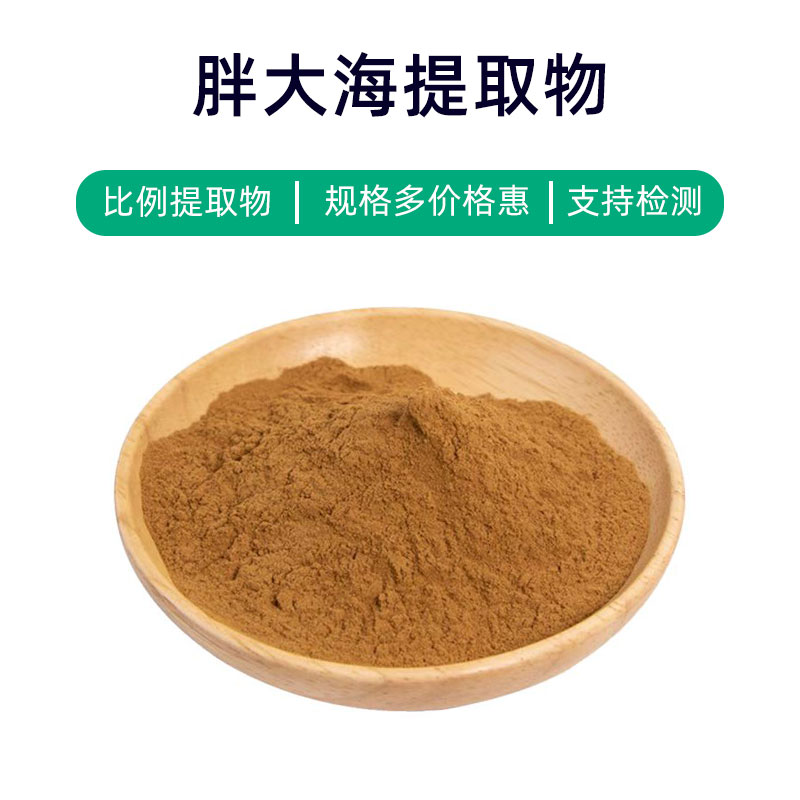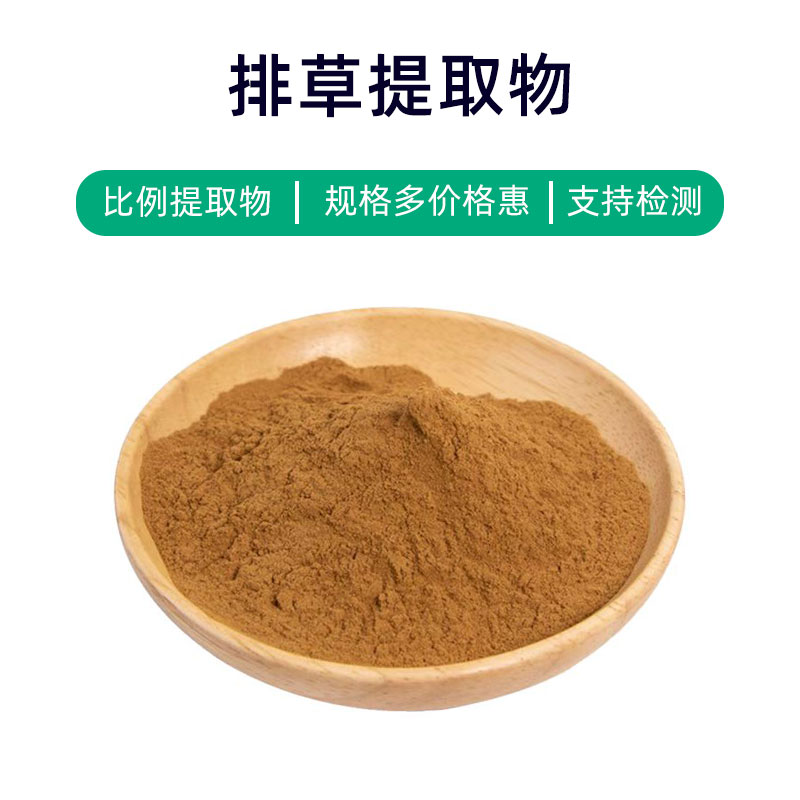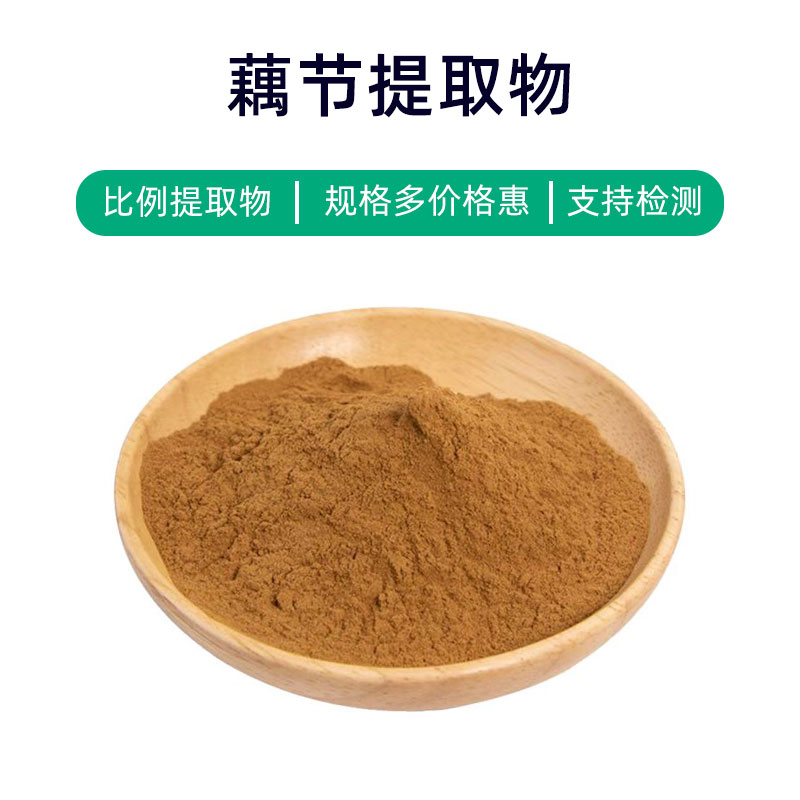Huai Mi Extract Product Introduction
Huai Mi extract is a natural plant extract derived from the seeds of the Sophora japonica tree. Its main active components include huai mi saponins, isohuai mi saponins, and huai mi alkaloids, which possess various biological activities including antioxidant, anti-inflammatory, and antibacterial properties. It's widely used in medicine, dietary supplements, and cosmetics.
The extract is known for multiple benefits, one of the most notable being its antioxidant capacity, which helps combat free radical damage, slow down the aging process, and protect the skin from environmental damage. Additionally, it demonstrates anti-inflammatory properties, making it useful for alleviating skin irritation, redness, and allergic reactions. Its antibacterial qualities also make it a great choice for treating skin infections and acne.
In the medical field, Huai Mi extract is commonly used to formulate antioxidants, anti-inflammatory medications, and skincare products. In dietary supplements, it can be made into oral liquids and capsules to improve immune function and prevent disease. In cosmetics, it’s often included in skincare and beauty products for its antioxidant, anti-inflammatory, and antibacterial effects, improving skin texture and reducing the appearance of wrinkles and fine lines.
Overall, as a natural plant extract, Huai Mi extract shows considerable potential in medicine, dietary supplements, and cosmetics, making it an essential ingredient in many products.
Huai Mi Extract Production Process
The production process of Huai Mi extract typically involves the following steps:
- Raw Material Preparation: Select fresh seeds from the Sophora japonica tree to ensure quality and freshness.
- Washing: Clean the seeds to remove impurities, dirt, and surface contaminants, ensuring the purity of the extract.
- Crushing and Grinding: After washing, crush and grind the seeds to create finer particles, improving extraction efficiency.
- Solvent Extraction: Mix the ground seeds with an appropriate solvent (such as ethanol or water) to extract the active components.
- Filtration: Filter the extraction liquid to remove residues and solid particles, yielding the Huai Mi extract liquid.
- Concentration: Concentrate the extract by removing the solvent, increasing its potency.
- Purification: Further purify the concentrated extract using techniques like membrane separation and freeze crystallization to enhance purity.
- Drying: Dry the purified Huai Mi extract to remove moisture, producing the final dry product.
- Packaging and Storage: Package the dried extract using moisture-proof and light-resistant materials, storing it in a cool, dry environment to ensure quality and stability.
These are the typical steps in the production process of Huai Mi extract, which requires careful control of each stage to maintain product quality and safety.
Huai Mi Extract Benefits and Side Effects
Huai Mi extract, derived from the seeds of the Sophora japonica tree, offers several benefits mainly highlighted as follows:
- Antioxidant Properties: Rich in various antioxidants like polyphenols and flavonoids, it helps eliminate free radicals, reducing oxidative stress and slowing down aging, while protecting cells from oxidative damage.
- Anti-inflammatory: The active components in Huai Mi extract have notable anti-inflammatory effects, suppressing the onset and progression of inflammatory responses, alleviating discomfort and pain related to inflammation,and helping to improve symptoms of inflammatory diseases.
- Blood Sugar Regulation: Certain components can help lower blood sugar levels and improve insulin sensitivity, aiding in the prevention and control of diabetes and enhancing blood glucose management in diabetic patients.
- Lipid Lowering: The extract contains active ingredients that can help lower cholesterol and triglyceride levels in the blood, facilitating the prevention of cardiovascular diseases.
- Antibacterial Effects: It exhibits antibacterial and antifungal properties, inhibiting the growth of bacteria, fungi, and viruses, which aids in preventing and treating infectious diseases.
- Beauty Benefits: Active components in the extract provide moisturizing, anti-wrinkle, and whitening effects, improving skin dryness, laxity, and pigmentation issues, resulting in smoother and more even skin.
- Digestive Aid: With dietary fiber and digestive enzymes, it promotes digestive tract motility, enhancing bowel movements and alleviating issues like indigestion and constipation.
Generally, Huai Mi extract is considered safe as a natural plant extract, but individual differences and allergic reactions should still be considered. For specific populations such as pregnant women, nursing mothers, children, and those with allergies, it is advisable to use under the guidance of a physician to avoid unnecessary side effects.
Huai Mi Extract Application Scenarios and Dosage
Huai Mi extract finds extensive applications across medicine, food, and cosmetics. Here are its main applications, usage methods, and dosage for these sectors:
- Medical Field:
- Application Scenario: Often used to prepare traditional medicine formulas or dietary supplements aimed at body conditioning, disease prevention, and supporting the treatment of chronic illnesses.
- Dosage: Taken orally or applied externally. Typically, 5-10 grams are recommended per dose, 1-3 times a day; for external use, the extract can be directly applied to affected areas or formulated into ointments or topical solutions.
- Food Sector:
- Application Scenario: Commonly used as a natural food additive for flavor enhancement, preservation, etc., suitable for baked goods, beverages, and seasonings.
- Dosage: Should be added according to food processing requirements, usually 0.1-0.5 grams per kilogram of food.
- Cosmetics Sector:
- Application Scenario: Frequently used in cosmetics for moisturizing, antioxidant, and anti-aging benefits, applicable to facial skincare, shampoos, and hair care products.
- Dosage: Used according to product formulation and instructions; typically, a small amount is applied evenly to the skin or hair.
In summary, Huai Mi extract's medical applications focus on internal conditioning and treatment, requiring adherence to medical guidance for dosage; in the food and cosmetic sectors, it functions more as an additive, with dosage controlled according to product formulations. Regardless of the sector, product quality and safety should be a priority, following the manufacturer's instructions and recommendations.
Huai Mi Extract Source Plant Information: Distribution and Growth Environment
The source plant for Huai Mi extract is the Sophora tree, which belongs to the legume family with the scientific name Robinia pseudoacacia. Here’s a detailed overview of the tree, including its distribution and growth environment:
- Plant Characteristics:
- The Sophora tree is a deciduous hardwood that can grow 20-30 meters tall, with a broad crown and gray or gray-brown bark that presents longitudinal fissures and shallow vertical stripes.
- The leaves are alternate and compound, containing 6-14 pairs of ovate or elongated leaflets with serrated edges, smooth on the surface.
- Distribution:
- Native to North America, the Sophora tree has been introduced to Europe and Asia. It is now widely distributed globally, including areas of North America, Europe, Asia, and Australia.
- In China, it mainly grows in northern, northwestern, central, and northeastern regions, with higher concentration in northern China.
- Growth Environment:
- The ideal temperature range for growing Sophora trees is between 15-25 degrees Celsius, and they require ample sunlight.
- They have adaptable soil requirements, thriving in well-drained, fertile sandy loam or loam, and are intolerant to saline-alkali conditions.
- While drought-resistant, the Sophora tree also endures cold weather, demonstrating strong adaptability across different soil types and climates.
- Reproductive Methods:
- The tree can reproduce through both seeds and vegetative methods. Seed propagation is the primary method, with a capability for asexual reproduction through cuttings and grafts.
In summary, the Sophora tree is drought and cold-resistant, widespread globally. Its strong adaptability and broad growth requirements offer significant wood, medicinal, and nutritional value. Its fruit and seeds contain abundant Huai Mi extract, providing various health benefits and medicinal value.
Huai Mi Extract Processing and Storage
The processing of Huai Mi extract usually consists of several steps: beginning with the harvesting and cleaning of Huai Mi, then grinding it into powder, followed by the extraction process which typically uses water or solvent extraction methods, and finally concentrating and drying to obtain the extract.
For storage, it is generally advised to keep Huai Mi extract in a cool, dry place, away from direct sunlight and humid conditions, to avoid compromising its quality. It should also be kept clear of harmful chemicals to maintain its purity. Properly sealed and stored at an appropriate temperature can extend its shelf life.
Monica Sun is a seasoned expert in the plant extraction industry with over a decade of experience in research and production. She specializes in the extraction and purification of plant active ingredients, focusing on driving innovation in natural product applications. Monica has participated in the development of multiple functional plant extracts, delivering high-value natural raw material solutions for the health food, pharmaceutical, and dietary supplement sectors.









